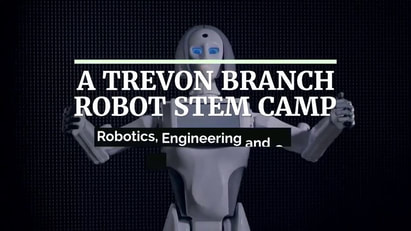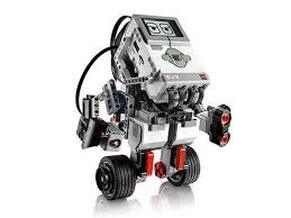How & Why
In today’s world there is a big demand for people to learn programming. EV3 language is designed for novice programmers and uses a simple block programming language. Advanced students may want to utilize a more sophisticated code and program using RobotC languages. Students can program using EV3,or ROBOTC depending on their interest and academic readiness. All students can begin somewhere. This class allows students to choose from an array of available methods to solve an assortment of exciting robotic challenges. Robotics allows students to think about and collaborate on how to design, innovate and problem solve using science mathematics and technology. The talents students develop as will ultimately translate to a number of different fields of enterprise. Robotics is an world-wide business that is having a tremendous effect on all our current generations.
What is Virtual Worlds?
Campers can practice their newly acquired skills using a variety of different building platforms. Students can choose to build robots using Tetrix Prime, Lego Mindstorms or a combination of both. In addition students may wish to test their programming skills in a virtual environment using “RVW”. RVW (Robotics Virtual Worlds) is a sophisticated simulation environment that enables students, without robots, to learn robotic programming without the need for a physical robot. Students can continue to work on individual programming challenges or enter competitions that allow robots to compete against one another. The competitions will test the ingenuity of the young engineers as they match their unique robotic designs.
In today’s world there is a big demand for people to learn programming. EV3 language is designed for novice programmers and uses a simple block programming language. Advanced students may want to utilize a more sophisticated code and program using RobotC languages. Students can program using EV3,or ROBOTC depending on their interest and academic readiness. All students can begin somewhere. This class allows students to choose from an array of available methods to solve an assortment of exciting robotic challenges. Robotics allows students to think about and collaborate on how to design, innovate and problem solve using science mathematics and technology. The talents students develop as will ultimately translate to a number of different fields of enterprise. Robotics is an world-wide business that is having a tremendous effect on all our current generations.
What is Virtual Worlds?
Campers can practice their newly acquired skills using a variety of different building platforms. Students can choose to build robots using Tetrix Prime, Lego Mindstorms or a combination of both. In addition students may wish to test their programming skills in a virtual environment using “RVW”. RVW (Robotics Virtual Worlds) is a sophisticated simulation environment that enables students, without robots, to learn robotic programming without the need for a physical robot. Students can continue to work on individual programming challenges or enter competitions that allow robots to compete against one another. The competitions will test the ingenuity of the young engineers as they match their unique robotic designs.
Another Trevon Branch Camp: Click Image
So Many Words in Robotics
Some T Words Below:
Some T Words Below:
Tact – the ability to get your point across without inducing tears or tantrums in either
kids or their parents. Show the kids kindness and they are more likely to use it
themselves. See “Safe, Kind …”. Talk about tact and respect with the kids. They are
useful teamwork skills. See Critical Thinking.
TEAM = Together Everyone Achieves More, There is no I in team
See file TEAM, FiveFingersTeamwork. A useful reminder to encourage teamwork and
counteract prima donna behavior.
Transmitter – a device which sends a signal. The LEGO IR tower is a transmitter.
Tunnel Vision – Focusing so intently on a particular solution that alternative solutions
and other associated tasks are ignored or forgotten. In working through these episodes,
try Active Listening techniques.
Turns – there are three types of turns in a robot with two independent motors each
attached to a wheel. Act these out by taping an “A” to one kid, a “C” to another, hook
their arms dosie-doe style and have them step/shuffle to simulate different motor
speeds and directionsl
Turn in place – one motor moves forward, the other backward. The tightest
turn.
Skid turn – one motor stopped, one moves forward. The moving motor drags
the stopped motor along.
Wide turn – one motor slow, the other faster, both in the same direction
kids or their parents. Show the kids kindness and they are more likely to use it
themselves. See “Safe, Kind …”. Talk about tact and respect with the kids. They are
useful teamwork skills. See Critical Thinking.
TEAM = Together Everyone Achieves More, There is no I in team
See file TEAM, FiveFingersTeamwork. A useful reminder to encourage teamwork and
counteract prima donna behavior.
Transmitter – a device which sends a signal. The LEGO IR tower is a transmitter.
Tunnel Vision – Focusing so intently on a particular solution that alternative solutions
and other associated tasks are ignored or forgotten. In working through these episodes,
try Active Listening techniques.
Turns – there are three types of turns in a robot with two independent motors each
attached to a wheel. Act these out by taping an “A” to one kid, a “C” to another, hook
their arms dosie-doe style and have them step/shuffle to simulate different motor
speeds and directionsl
Turn in place – one motor moves forward, the other backward. The tightest
turn.
Skid turn – one motor stopped, one moves forward. The moving motor drags
the stopped motor along.
Wide turn – one motor slow, the other faster, both in the same direction



